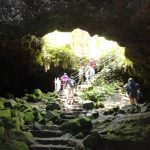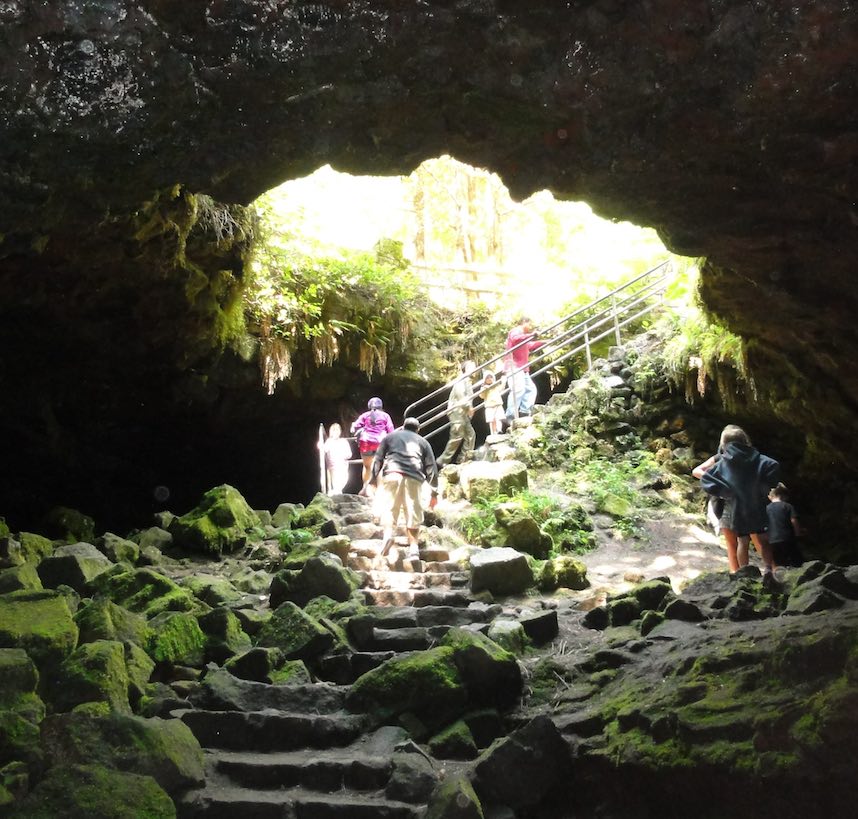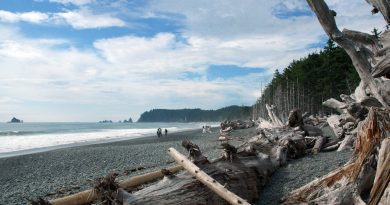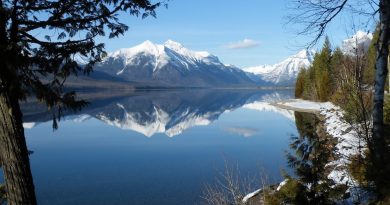Spring break 2017: Washington’s wondrous Ape Cave
At 2.5 miles long, Ape Cave — located just south of Mount St. Helens in Washington — is the longest lava tube in the continental United States. Discovered by Lawrence Johnson in 1951, Ape Cave is now a popular hiking spot in Gifford Pinchot National Park. The cave was first explored by a group of boys who called themselves the Mount St. Helens Apes — inspiring the name of the cave. The area surrounding Ape Cave has also been known for the spotting of hairy apes. It’s the perfect road trip destination for those too busy to commit to a 10-day spring break as it’s only a three hour drive from Tacoma.
Ape Cave is split into two areas, the lower cave and the upper cave. The lower of the caves can be hiked within an hour and is best known for its “Meatball” — a block of cooled lava that fell from the ceiling while there was still lava flow which then dried and became wedged in a narrow area above the cave floor. Another attraction in the lower cave is the “Railroad Tracks” — a ridge that formed along the lava flow. Within the lower cave, there is an upper section where hikers can get a boost up from a friend to climb further and a lower section. Exploring both of these parts requires crawling and wiggling as far as possible. If slime fascinates you, be sure to get a good look at the walls of the cave which are coated with slime that serves as food for cave life.
The upper cave is a longer and more strenuous hike at 1.5 miles. Hikers must climb over piles of boulders and scale an 8-foot wall of dried lava using provided footholds in this portion of the cave. One of the interesting areas in the upper cave is the skylight hole near the exit. Although many people are tempted to use this hole as an exit, it’s prohibited; hikers must keep walking until they reach a second skylight which has a ladder that leads to the upper exit.
Exploring the cave won’t take too long. However, there are many more activities around the cave such as a trail that leads people to a glorious view of the lava canyon formed by drying lava. Another area to visit is Lake Merwin Park which has a swimming hole and a picnic spot.
When hiking in the cave, be sure to wear warm, waterproof clothing because the cave is at a constant 42 degrees Fahrenheit and there are many trails outside that will be fun to hike as well. It is also advisable to carry at least three sources of light. UW Tacoma student Tony Fruhauf suggests bringing a headlamp, knee-pads and hiking shoes for the rough terrain, but says not to “be alarmed at the gear. [It’s so easy that even] toddlers have gone through the caves.” Fruhauf also advises people to keep track of weather patterns before setting off for the hike because rain and snow make it harder to enter and exit the cave as well as make the trails nearby harder to hike.
It’s a very family-friendly place to visit that offers arduous activity. Although there are many trails near Ape Cave that allow dogs, they are not allowed into the cave itself — so plan on leaving your furry friend at home if you’re going to explore the depths of the cave.
Hotels near the cave to stay in after a day of hiking can cost anywhere from $80 to $150. To get the best deal, book in advance. As for food, eating is prohibited in the cave but there are many restaurants nearby that you can visit after exploring. To save money, packing food from home is also an option. To park close to the cave, there is a pass required which can be purchased online. Day passes cost as little as $5 while annual passes can be up to $80.
If you’re looking for a short adventure full of hikes and beautiful scenery, Ape Cave is the perfect place for your spring break.






